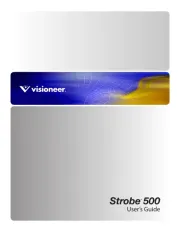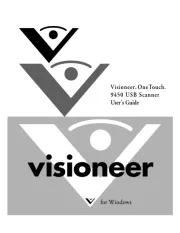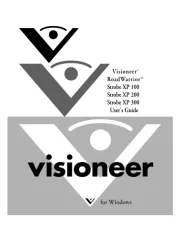Zum Testen von KFZ-Relais gehen Sie wie folgt vor:
• Verbinden Sie die beiden Polklemmen mit einer 12 V Gleichspannungsquelle. Die rote
Polklemme muss am Pluspol, die schwarze Polklemme muss am Minuspol angeschlossen
werden. Achten Sie auf die korrekte Polarität.
• Die Anzeige (3) leuchtet nach ca. 1 s rot.
• Wählen Sie am Wahlschalter (5) die Anzahl der Kontakte an Ihrem Relais. Schieben Sie
den Schalter in die Position, die mit den Anschlüssen an Ihrem Relais überein stimmt (4PIN
oder 5PIN).
• Stecken Sie das Relais vollständig in den jeweils passenden Testsockel (2).
• Drücken Sie den Taster (4) um den Test zu starten. Der Relaistester führt 10x nacheinander
einen Funktionstest durch, um auch Aussetzfehler erkennen zu können. Das Relais zieht
10x hörbar an.
• War der Test erfolgreich leuchtet die Anzeige grün auf. Wurde ein Fehler entdeckt (Relais
zieht nicht an, Übergangswiderstand an den Schaltkontakten zu hoch etc.), leuchtet die
Anzeige rot. Das fehlerhafte Relais sollte genauer Untersucht oder ausgetauscht werden.
• Entfernen Sie das Relais. Der letzte Anzeigenstatus bleibt erhalten und der nächste Relais-
test kann durchgeführt werden.
• Entfernen Sie nach Testende immer die Polklemmen von der Spannungsquelle. Lassen Sie
diese nicht dauerhaft angeschlossen.
Das Testergebnis ist ein Schnelltest! Schaltungsbedingt können nicht alle Fehler
z.B. Spannungsabfall an den Kontakten unter Volllast etc. getestet werden.
Erfolgt der Anschluss des Relaistesters mit bereits eingestecktem Relais an die
Betriebsspannung, wird sofort ein Testdurchlauf durchgeführt. Für weitere Tests
muss der Taster (4) gedrückt werden.
Wird der Relaistester verpolt angeschlossen, leuchtet die Anzeige nicht und das
Gerät ist inaktiv. Kontrollieren und berichtigen Sie den Anschluss an die Betriebs-
spannung.
Achten Sie beim Umgang mit Bleibatterien auf ausreichende Belüftung. Bei der
Ladung können explosive Gase entstehen. Vermeiden Sie offenes Feuer und
Funkenbildung.
Achten Sie beim Anschluss stets auf korrekte Polarität und vermeiden Sie Kurz-
schlüsse.
Achten Sie bei laufenden Motoren auf drehende Teile. Diese können Sie verletzen
oder das Gerät beschädigen.
Elektrische und elektronische Geräte gehören nicht in den Hausmüll.
Entsorgen Sie das Produkt am Ende seiner Lebensdauer gemäß den geltenden
gesetzlichen Bestimmungen.
Betriebsspannung .................................10,8 – 14 V/DC
Relais-Spulenwiderstand ......................20 – 500 Ohm
Relais-Kontaktwiderstand .....................<200 Milliohm (Schwellenwert)
Relais-Testspannung ............................9 V/DC
Länge Anschlusskabel ..........................ca. 130 cm
Abmessungen (LxBxH) .........................133 x 69 x 35 (mm)
Gewicht .................................................ca. 190 g
Betriebsbedingungen ............................0 bis +50 °C, <80% rel. Luftfeuchte
D
Der KFZ-Relaistester dient zur schnellen und einfachen Überprüfung der gängigsten KFZ-
Relais mit 4 oder 5 Anschlüssen. Der Tester führt eine vollautomatische Prüfung des Relais
durch und zeigt das Ergebnis in einer Leuchtanzeige an (Grün = OK, Rot = Fehler). Der Test
erfolgt Spulen- und Kontaktseitig. Je Testdurchgang kann nur ein Relais getestet werden. Der
Anschluss mehrerer Relais ist nicht zulässig.
Der KFZ-Relaistester benötigt zum Betrieb eine KFZ-Gleichspannung von 12 V. Diese kann
direkt an der Fahrzeugbatterie abgenommen werden. Polklemmen erleichtern den Anschluss
an die Fahrzeugbatterie.
Eine andere Verwendung als zuvor beschrieben, führt zur Beschädigung dieses Produktes,
außerdem ist dies mit Gefahren wie z.B. Kurzschluss, Brand, elektrischer Schlag etc. verbun-
den. Das Produkt darf nicht geändert bzw. umgebaut werden!
Beachten Sie die Sicherheitshinweise.
Dieses Gerät ist kein Spielzeug und gehört nicht in Kinderhände.
Lassen Sie Verpackungsmaterial nicht achtlos herumliegen; diese könnte für Kinder zu einem
gefährlichen Spielzeug werden.
Setzen Sie das Gerät keiner Nässe oder Feuchtigkeit aus.
Starke Vibrationen oder ein Herunterfallen können das Gerät beschädigen.
1 Stromversorgungskabel mit Polklemmen
(Rot = Plus, Schwarz = Minus)
2 Testsockel für KFZ-Relais
3 Anzeige für das Testergebnis
(Grün = OK, Rot = Fehler)
4 Taster für Testbeginn und Testende
5 Wahlschalter für 4-PIN oder 5-PIN-Relais
Diese Bedienungsanleitung ist eine Publikation der Conrad Electronic SE, Klaus-Conrad-Str. 1, D-92240 Hirschau (www.conrad.com).
Alle Rechte einschließlich Übersetzung vorbehalten. Reproduktionen jeder Art, z. B. Fotokopie, Mikroverlmung, oder die Erfassung
in elektronischen Datenverarbeitungsanlagen, bedürfen der schriftlichen Genehmigung des Herausgebers. Nachdruck, auch auszugs-
weise, verboten.
Diese Bedienungsanleitung entspricht dem technischen Stand bei Drucklegung. Änderung in Technik und Ausstattung vorbehalten.
D











